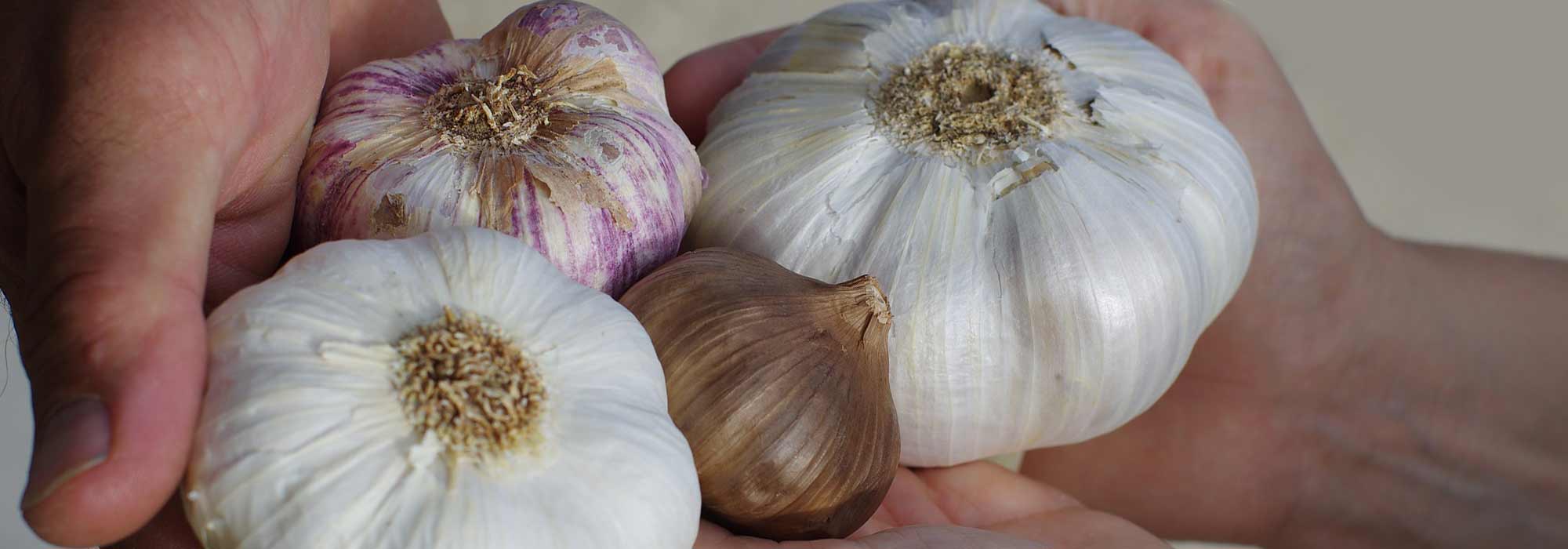
Garlic: the best varieties
A diversity of flavours and colours
Contents
Purple garlic, white garlic, pink garlic… There are many varieties of garlic, a root vegetable from the lily family that is very popular on our plates for its pungent flavour. While the Allium sativum is grown as an annual, other species, such as rocambole garlic and wild garlic, are perennial varieties that can remain in the garden for several years.
Flavour, productivity, storage… Discover our selection of the best garlic varieties.
White garlic 'Messidrome' (Allium sativum): a productive variety with a mild flavour
White garlic ‘Messidrome’ is an autumn variety that produces bulbs with very white bulbils consisting of 10 to 15 pods. Its excellent yield and the mild flavour of its bulbils make it a top-notch young plant. Moreover, this regenerated variety, derived from ‘Blanc de la Drôme’ garlic, is free from the OYDV virus.
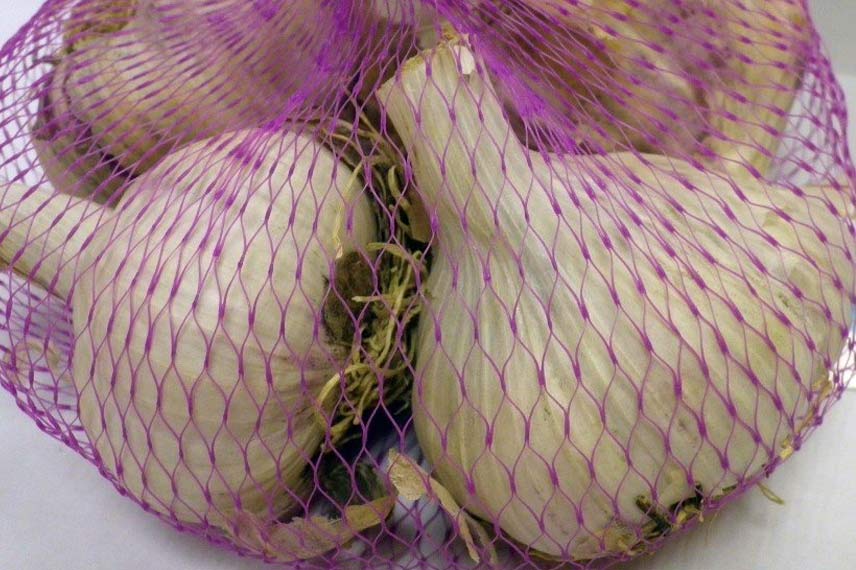
Growing
An autumn variety, semi-early, ‘Messidrome’ is planted in the vegetable garden between the months of September and December. The harvest of the pods occurs between June and July, when the foliage wilts. The harvest of the leaves occurs much earlier, between April and May, while they are still green.
Culinary use
The pods of this garlic offer a mild flavour and can be consumed raw or cooked. The leaves of white garlic can also be used, finely chopped, to flavour omelettes and fresh cheeses.
Pink garlic from Tarn (Allium sativum): renowned for its vibrant pink bulbils.
Rose du Tarn garlic is a local variety emblematic of the Lautrec region. It is particularly known for its cloves of a deep pink colour, which have a long shelf life. This variety is also characterised by its very sturdy flower stalks.
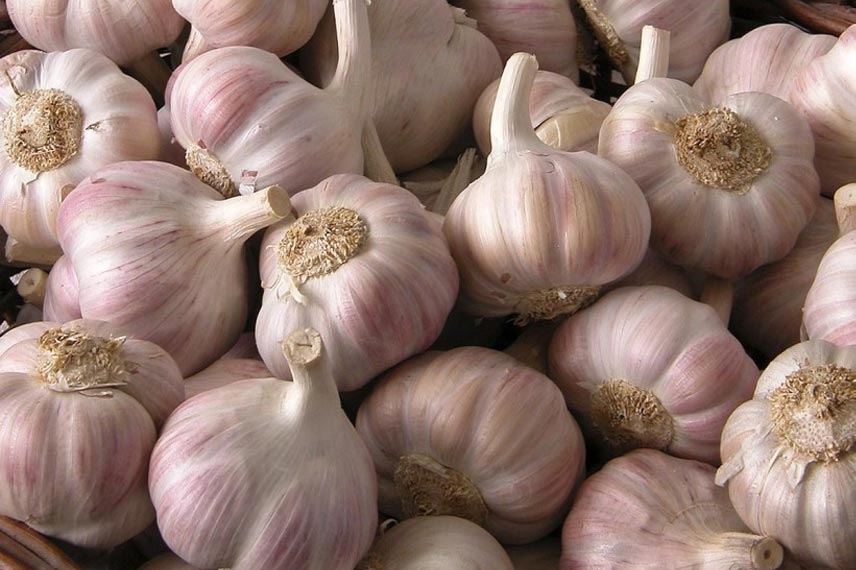
Growing
Rose du Tarn garlic is planted during winter, between the months of December and January, in soil preferably clay-limestone. This variety is known for its ability to withstand harsh winters and hot, even dry, summers. The flower stalks of Rose du Tarn garlic should be pruned in June to encourage the growth of the bulbs. The harvest takes place from late June to late July, and the cloves can be stored until March.
Culinary use
This excellent variety produces pink bulbils with a mild flavour, used raw or cooked in cooking to flavour salads, meats, mushrooms, stews, stuffing, aioli, and snail butters.
Discover other Garlic Heads
View all →Available in 2 sizes
Available in 2 sizes
Available in 2 sizes
Available in 1 sizes
Available in 1 sizes
Available in 1 sizes
Available in 1 sizes
Available in 1 sizes
Available in 1 sizes
Available in 2 sizes
Pink garlic ‘Printanor’ (Allium sativum): a particularly productive pink garlic
Pink garlic ‘Printanor’ is a spring variety that produces bulbs with pink bulbil, boasting good storage capacity. Unlike other pink garlic varieties, ‘Printanor’ is particularly known for its high yield. It is also a regenerated variety, free from the OYDV virus.
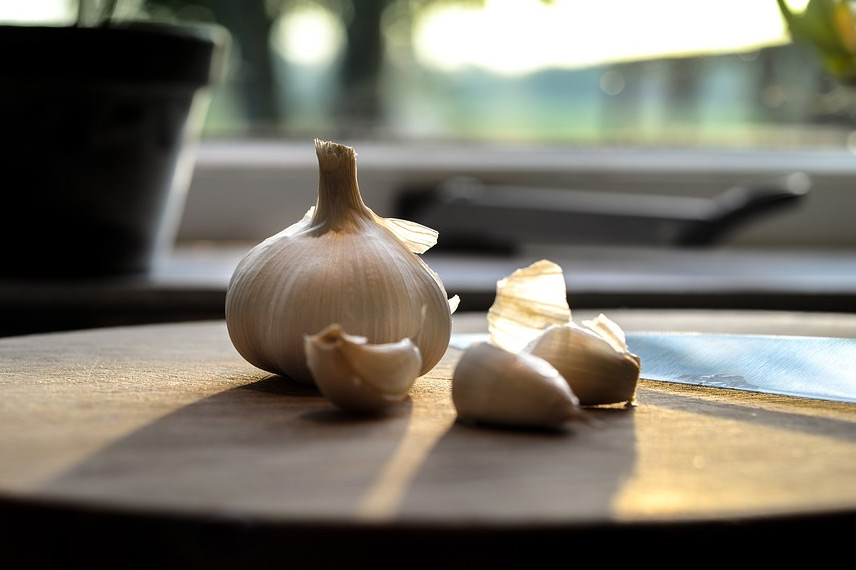
Growing
As a spring variety, ‘Printanor’ is planted in the garden between February and March. Its pods are harvested at ripeness between the months of June and July. Note that pink garlic is well suited to regions with harsh winters.
Culinary use
In cooking, the pungent flavour of pink garlic ‘Printanor’ is perfect for flavouring a variety of raw and cooked dishes (meats, salads, stuffings, sauces…).
Read also
Conserver les légumes du potagerPurple garlic 'Germidour' (Allium sativum): an early variety with pronounced aromas
Purple garlic ‘Germidour’ is an autumn very early variety that produces bulbs with purplish bulbil and ivory white flesh. ‘Germidour’ is also highly productive, yielding an average of 10 to 14 garlic heads per kilo. This regenerated variety, derived from ‘Violet de Cadours’, is free from the OYDV virus.
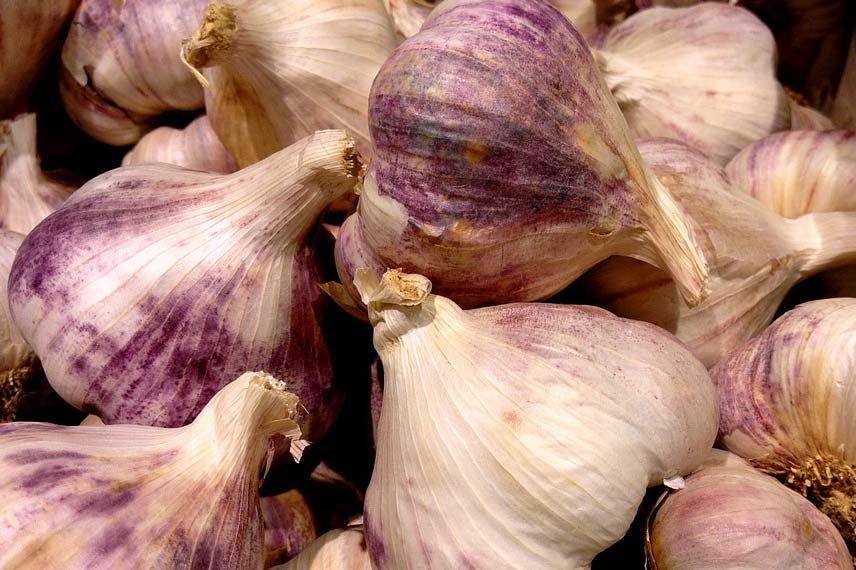
Growing
Grown as an annual, garlic ‘Germidour’ is planted in the vegetable garden during autumn, between the months of September and December. Its bulbils are harvested between June and July, and its foliage is collected while still green, between April and May.
Culinary use
This variety of autumn offers bulbils with pronounced aromas, perfect for flavouring both cooked and raw dishes. The leaves of purple garlic, like those of white garlic, can be finely chopped and used to flavour fresh cheeses and omelettes, just like chives.
Ramsons (Allium scorodoprasum): a perennial with aerial bulblets
Rocambole garlic is a very special perennial variety of garlic that produces small edible bulblets at the top of its stems. Taller than common garlic, its pale green leaves are long and flat, and its spiralled stems are topped with aerial bulblets.
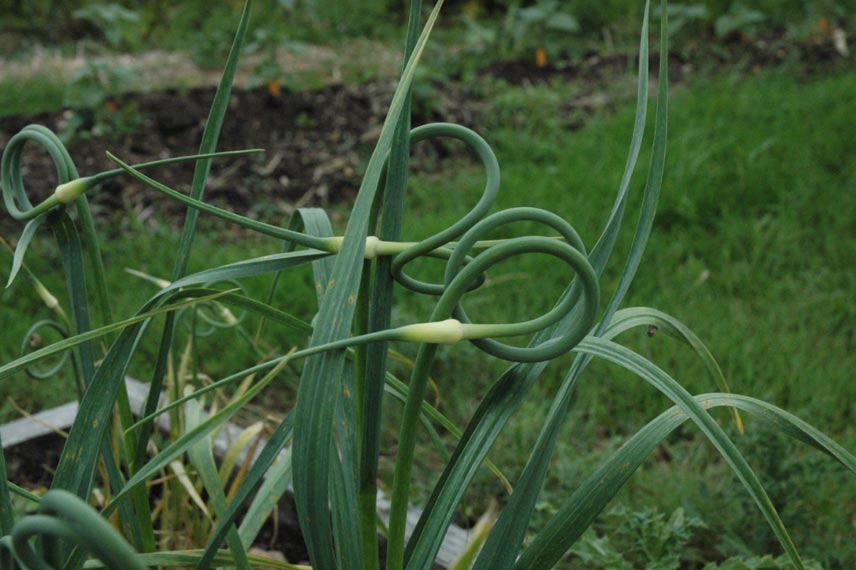
Growing
Rocambole garlic is cultivated exactly like Allium sativum. Perennial and very hardy, it is planted between March and May in a sunny location where it can remain for several years. The harvest of aerial bulblets occurs in summer, before they fall to the ground. The leaves are harvested when they are still green.
Culinary use
Rocambole garlic offers a milder flavour than that of common garlic. Its leaves are finely chopped before being used like chives to flavour omelettes and fresh cheeses. The bulblets can be pickled in vinegar.
Wild garlic (Allium ursinum): a completely edible perennial garlic from the woodlands
Wild Garlic is a herbaceous bulb from the undergrowth, featuring large, narrow, glossy green leaves, and it produces a beautiful flowering in white umbels. A culinary and medicinal plant, the bulb, flower buds, and leaves are all edible. Wild garlic belongs to the lily family, just like common garlic (Allium sativum). Detoxifying, hypotensive, and antiseptic… Wild garlic is rich in vitamin C.
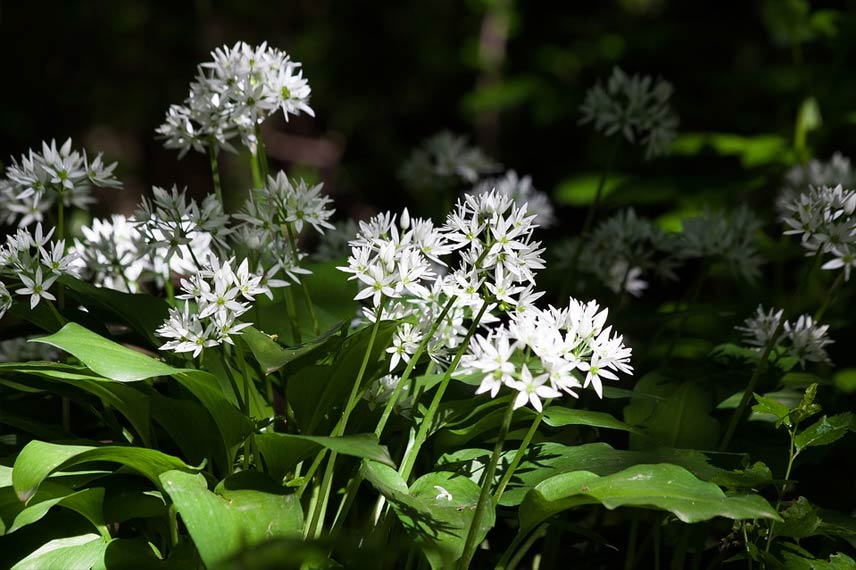
Growing
A hardy plant for partial shade, wild garlic is sown in July in humus-bearing, moist but well-drained soil. The harvest period is long, as it can be gathered from January to October.
Culinary uses
All parts of the plant are edible. It has an aroma quite similar to that of common garlic, although it is less pungent than the latter, and it offers a more herbaceous and refined flavour. The bulb and leaves of wild garlic can be used as seasonings. The leaves can also be enjoyed cooked like spinach, or raw in salads. Wild garlic is also used in infusions.
- Subscribe!
- Contents
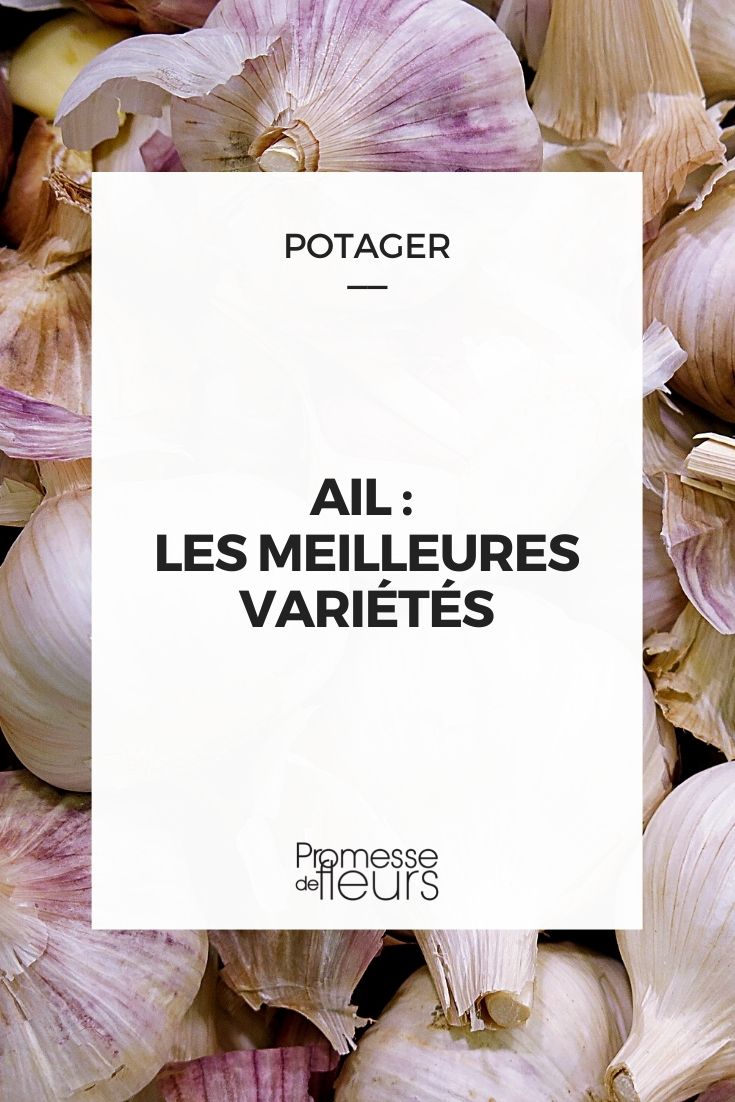






























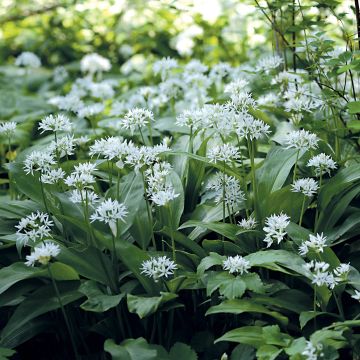
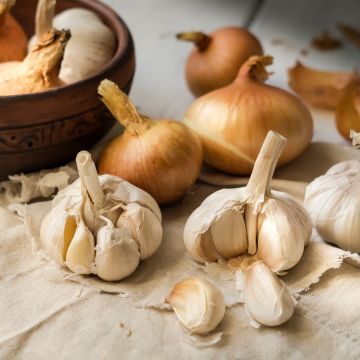
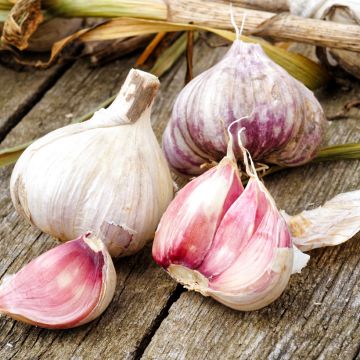
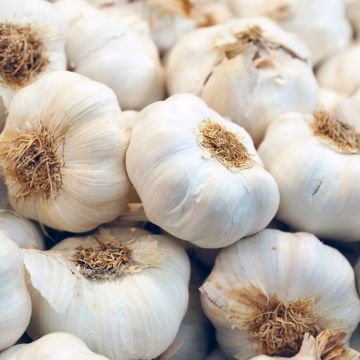
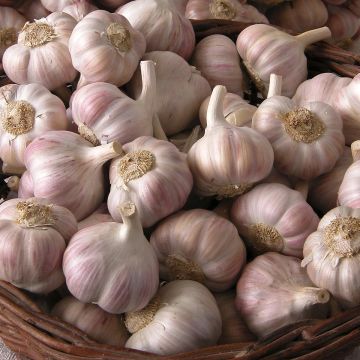
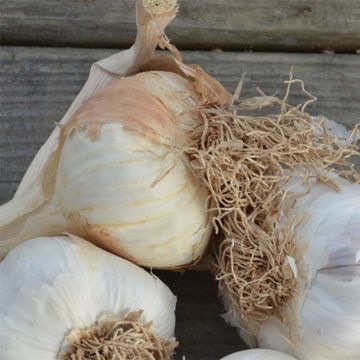
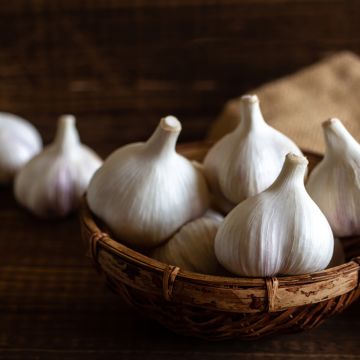
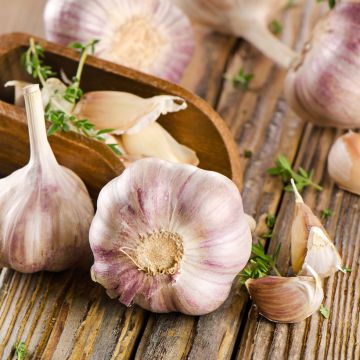
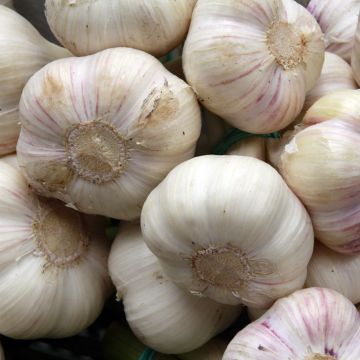
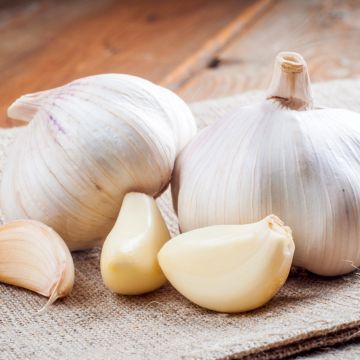
Comments